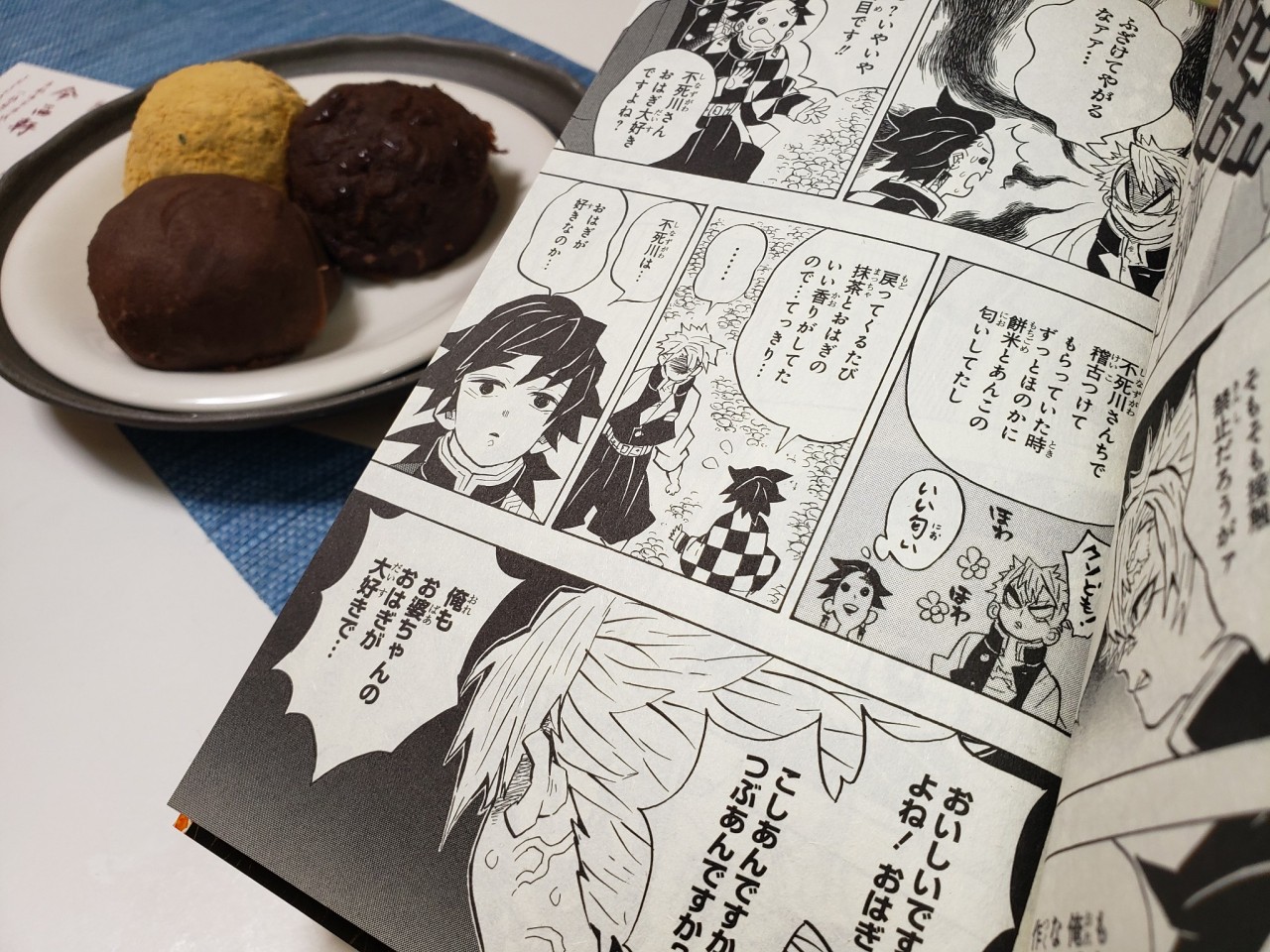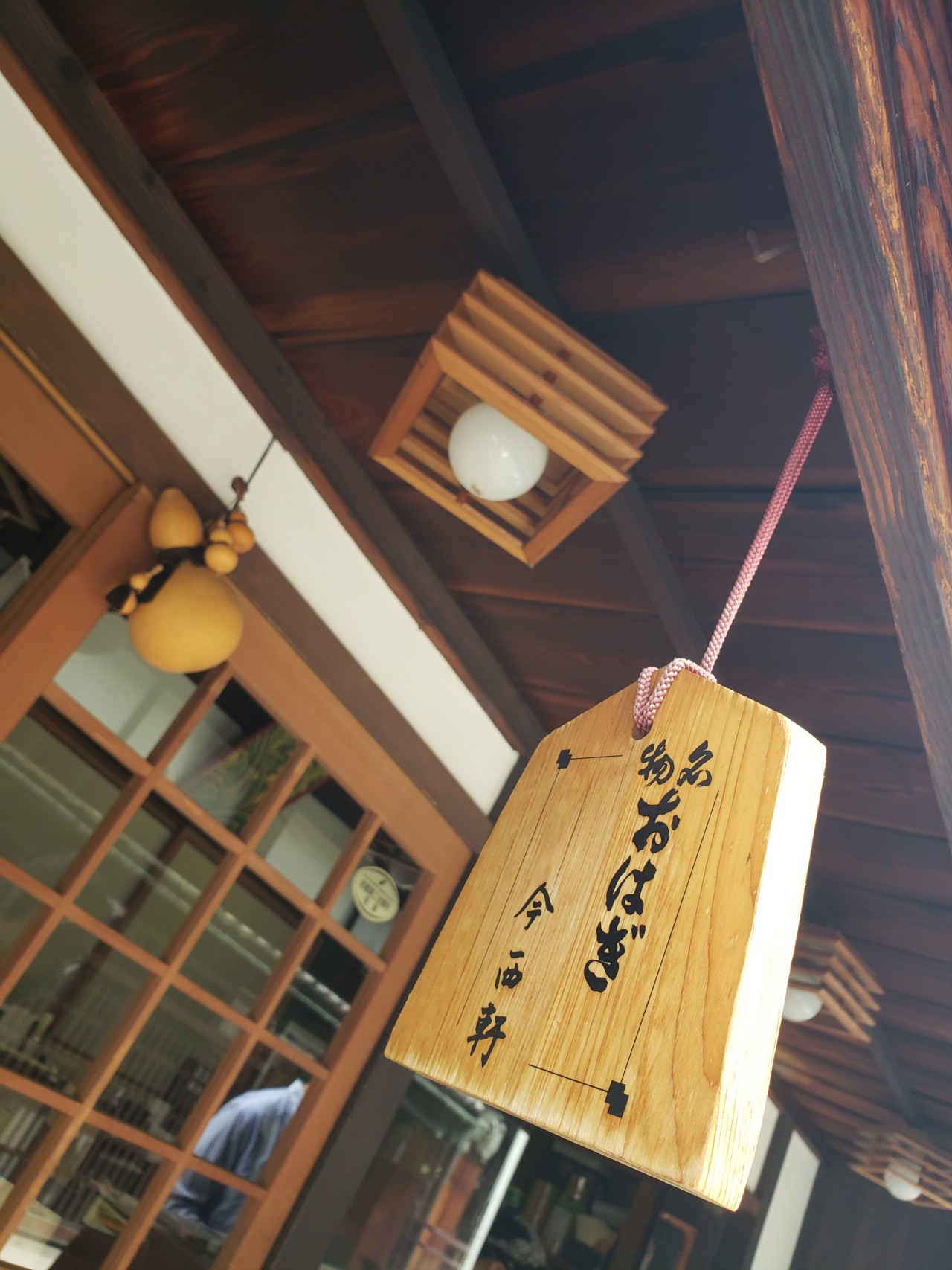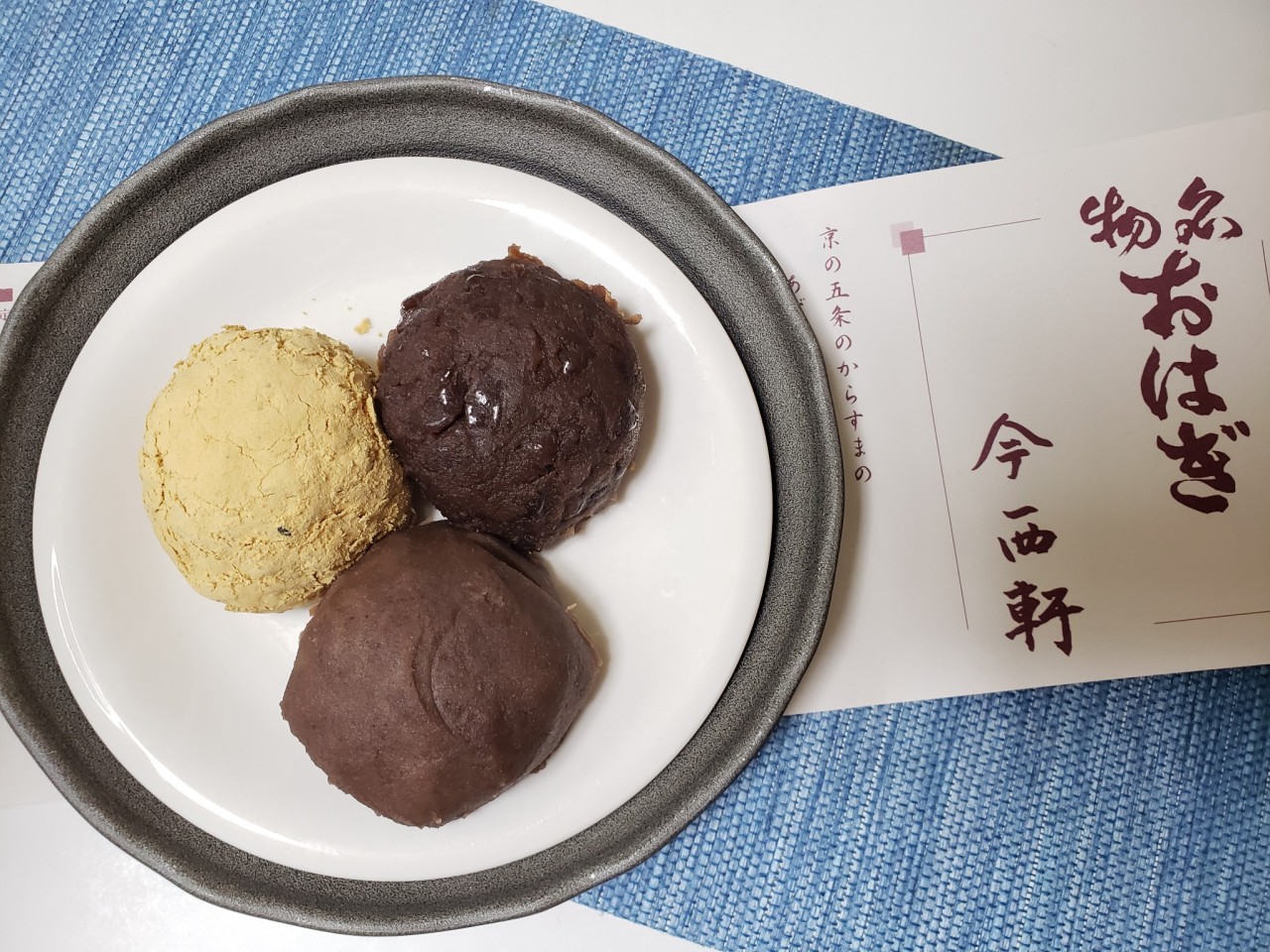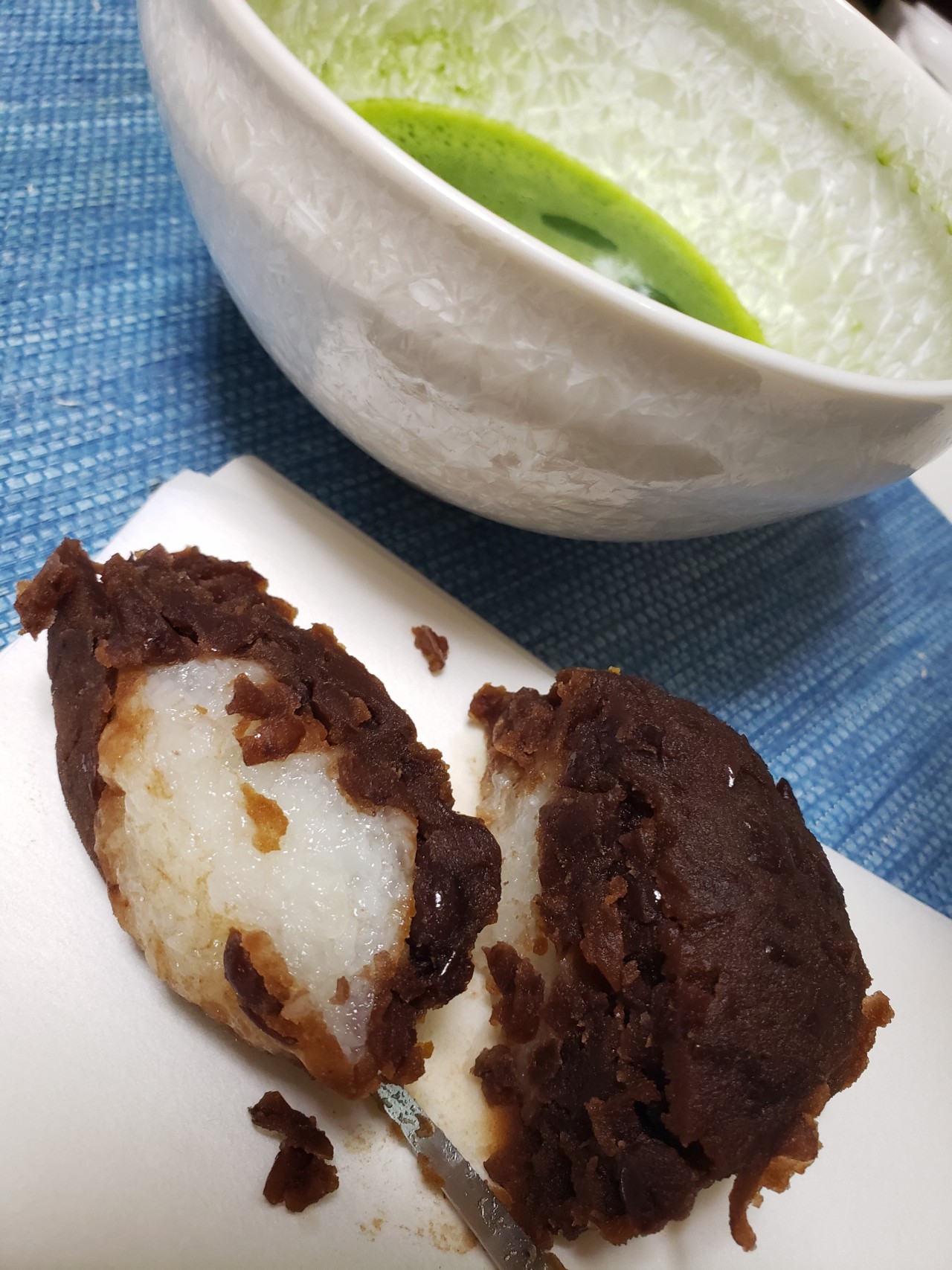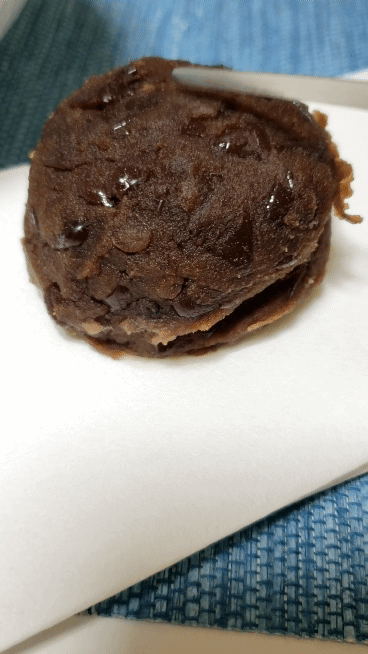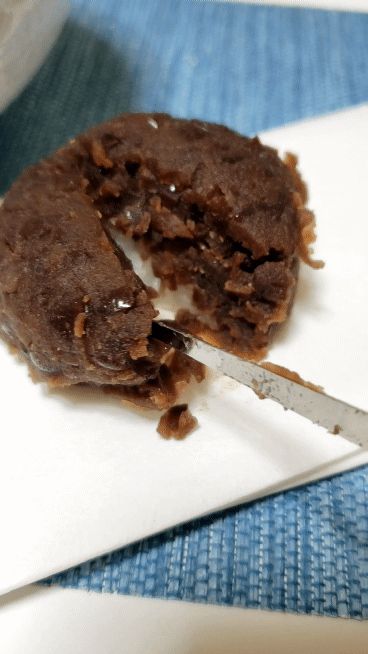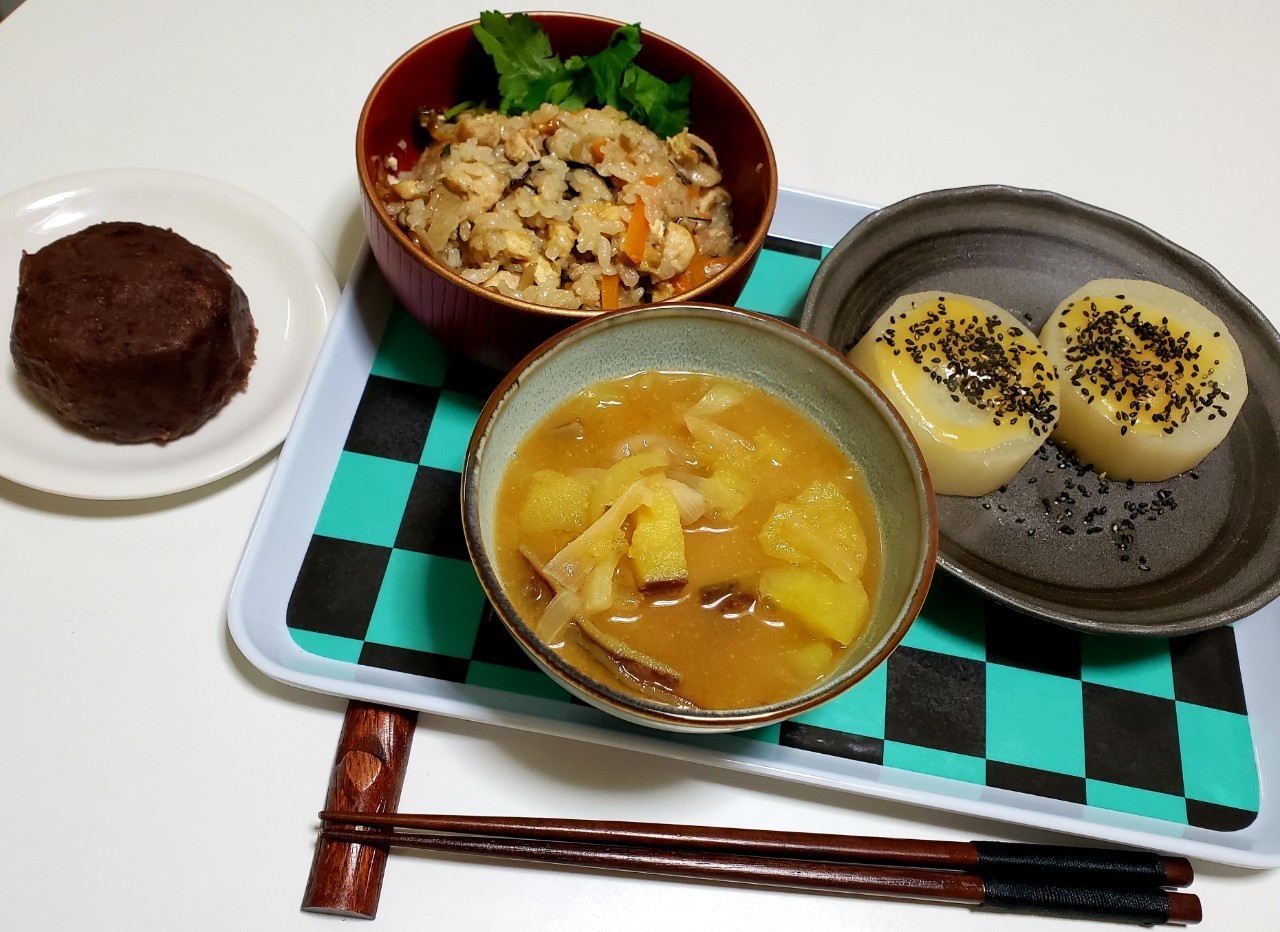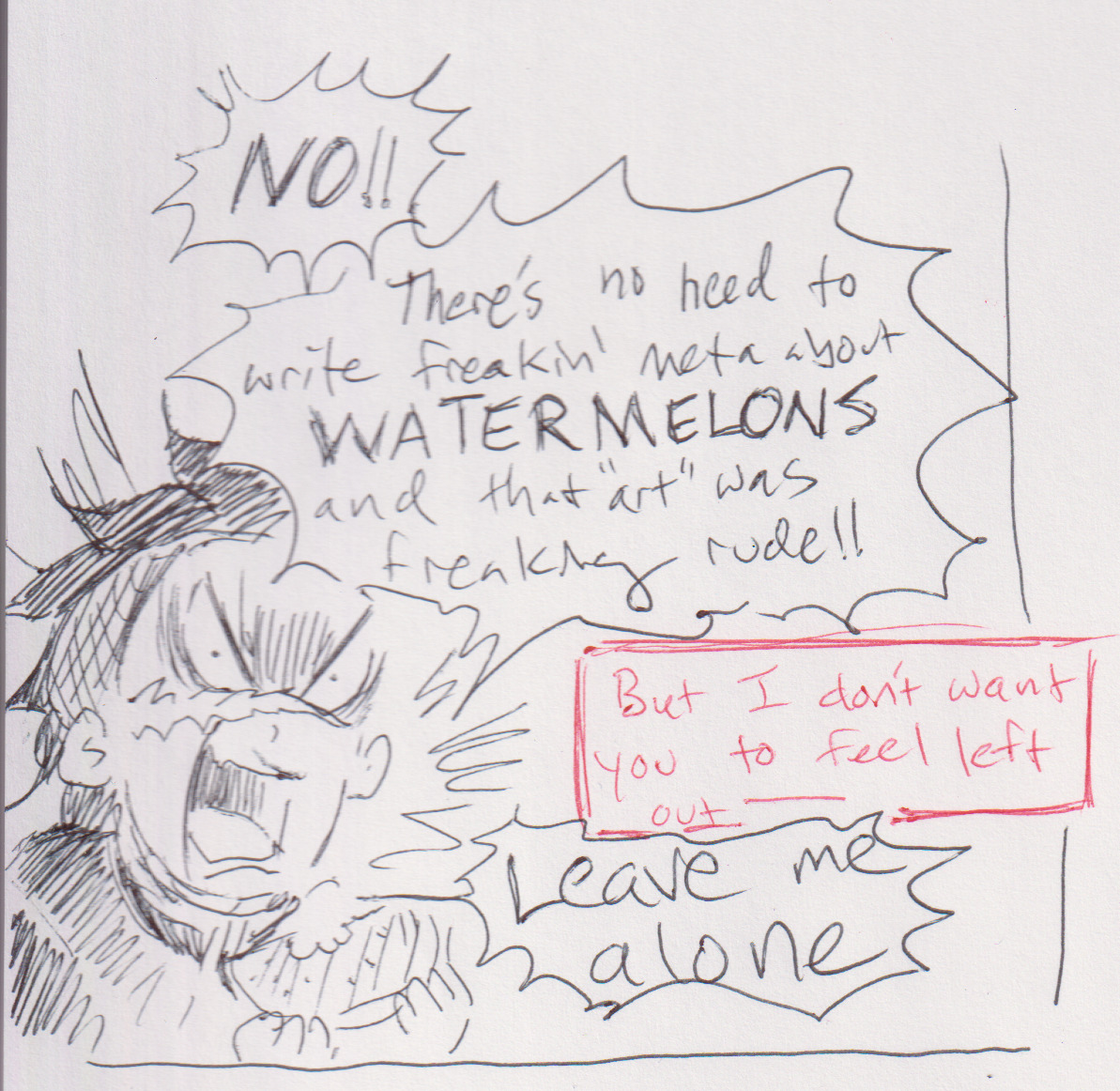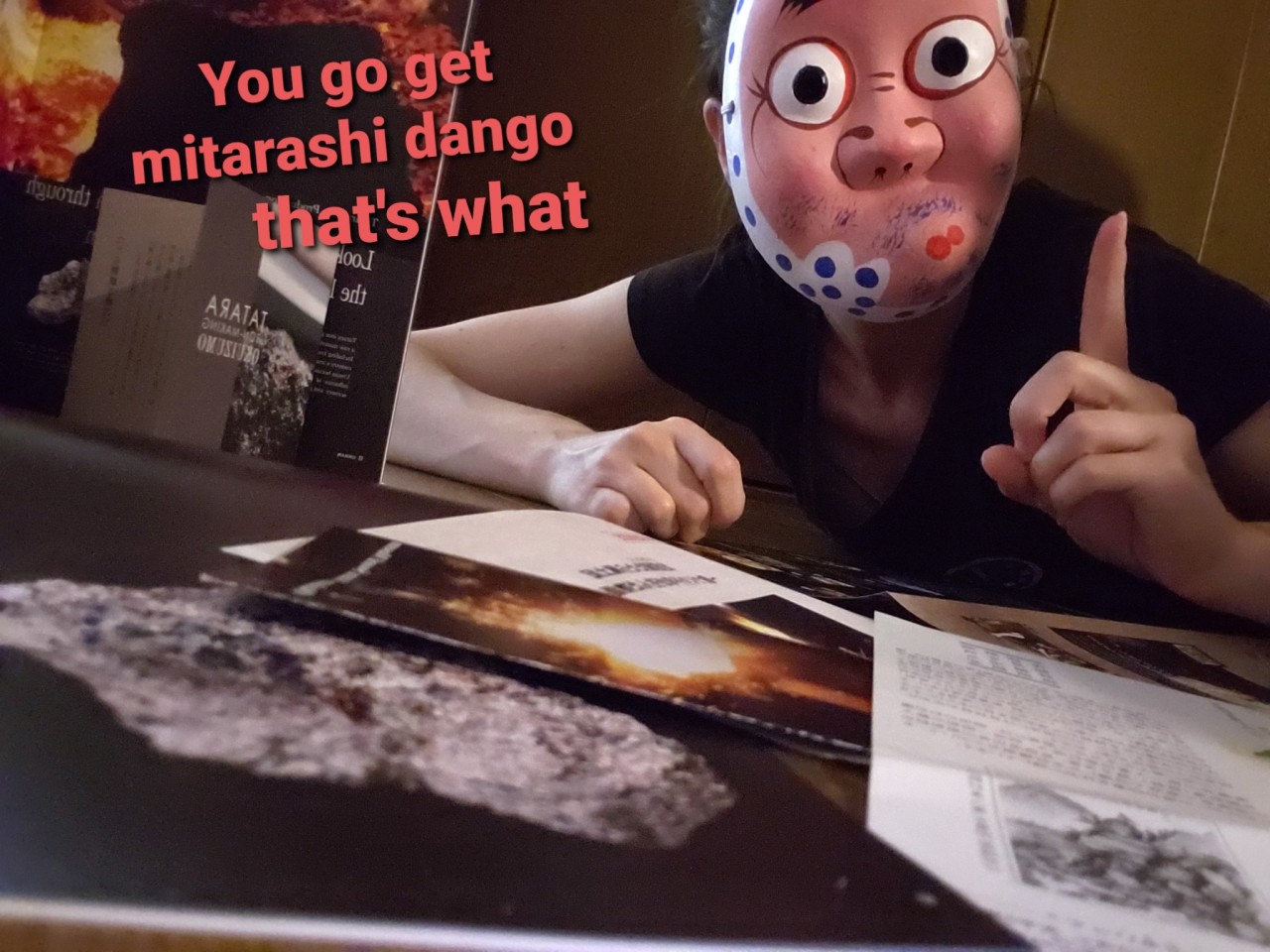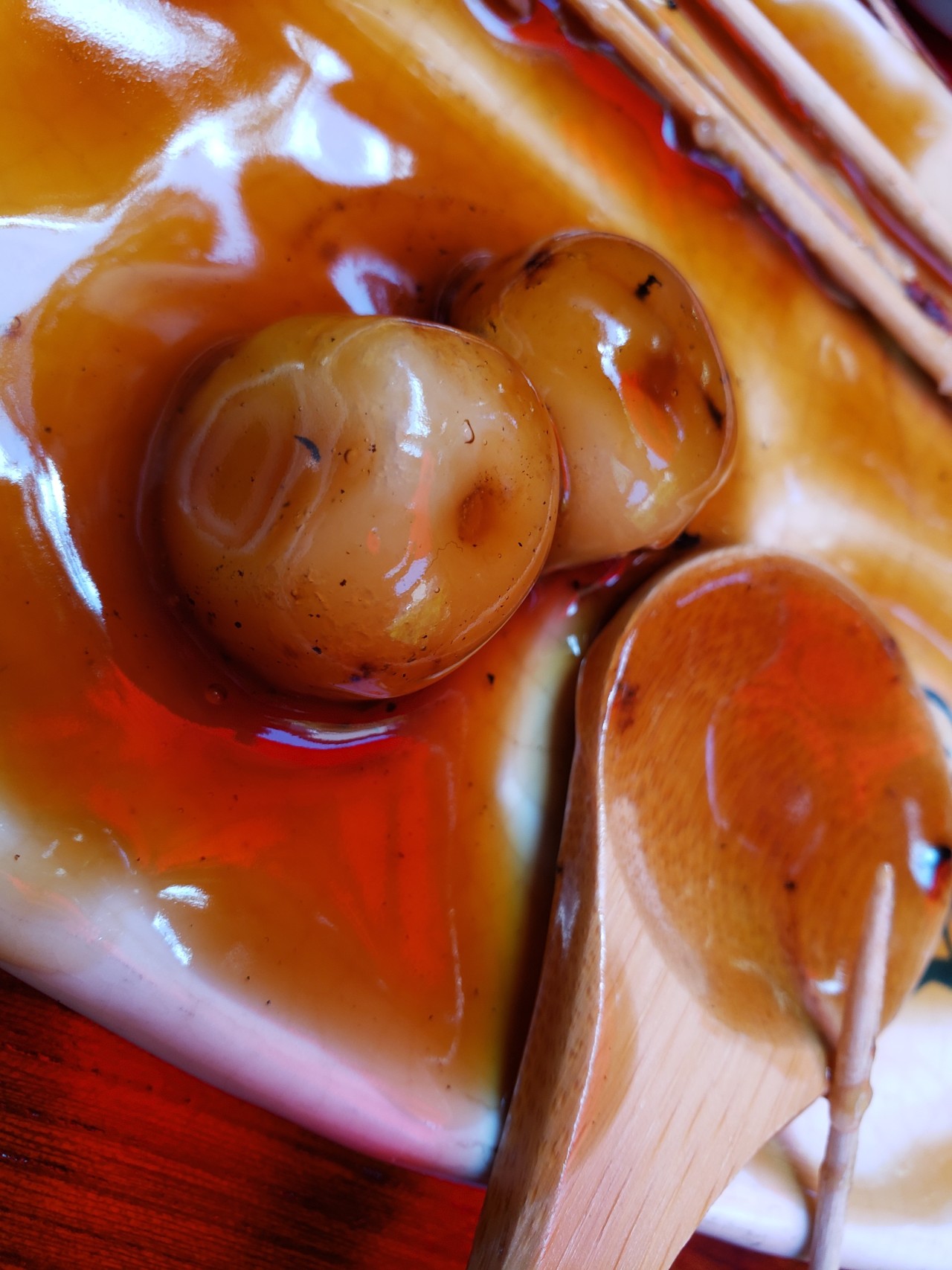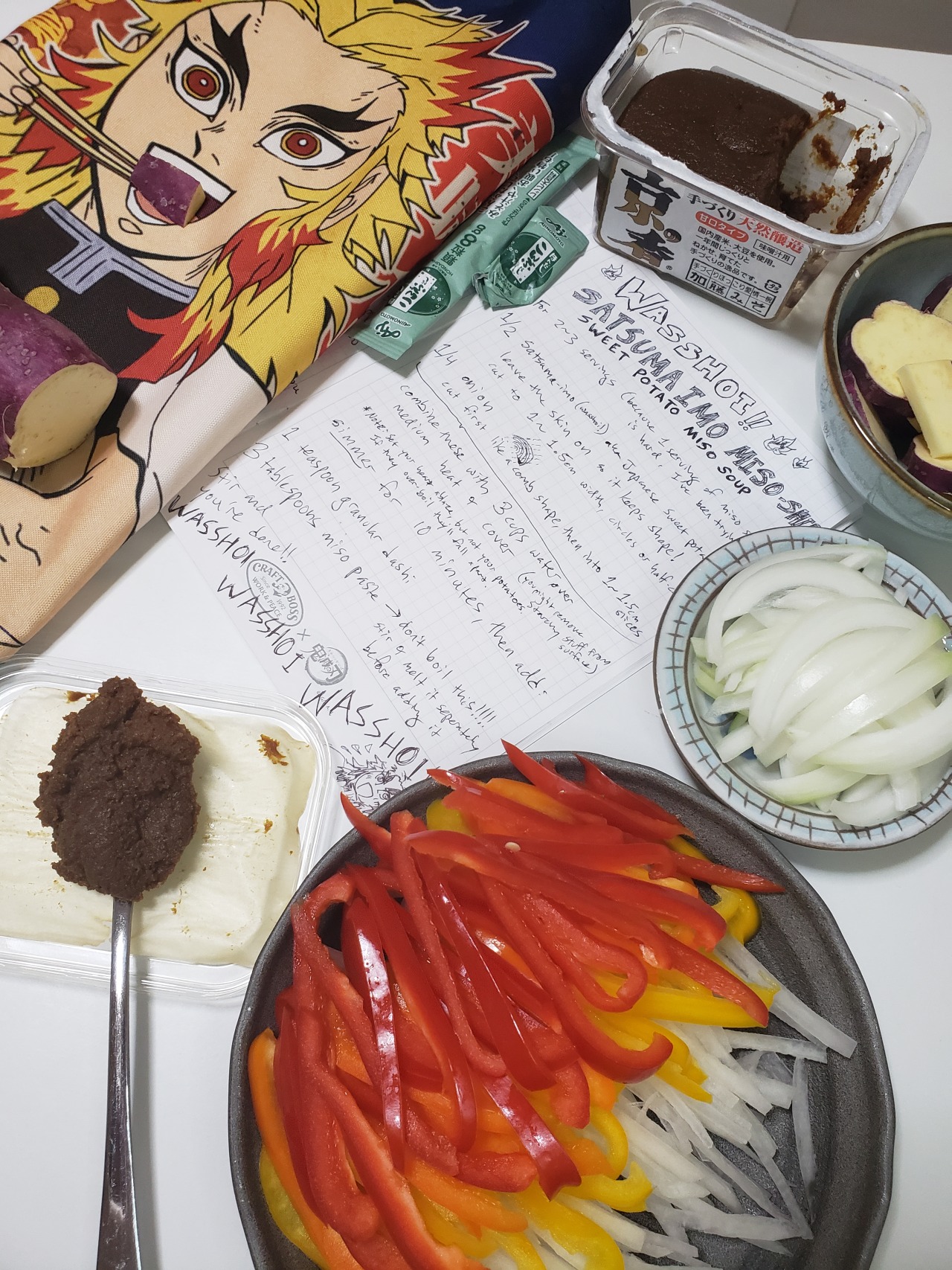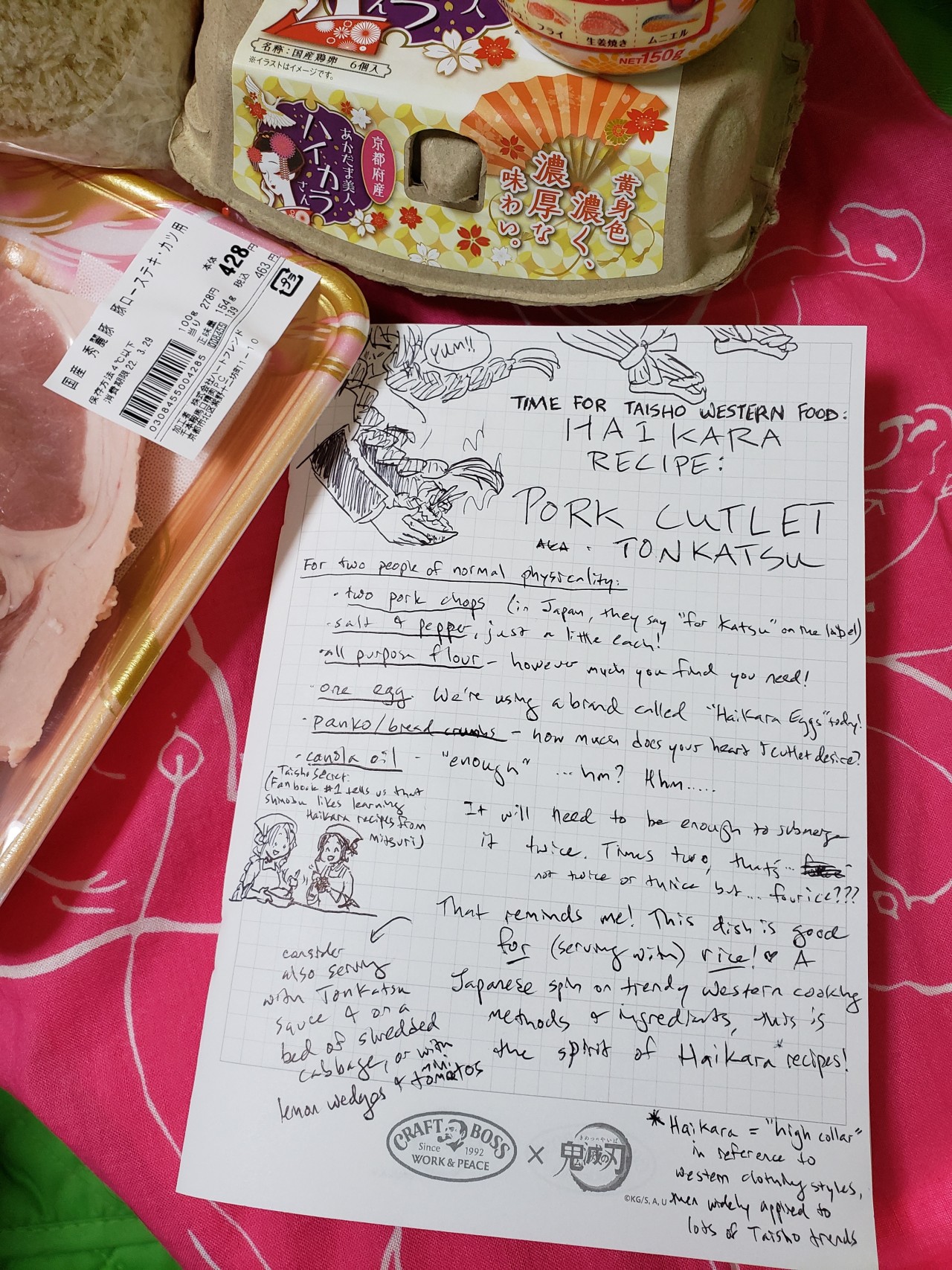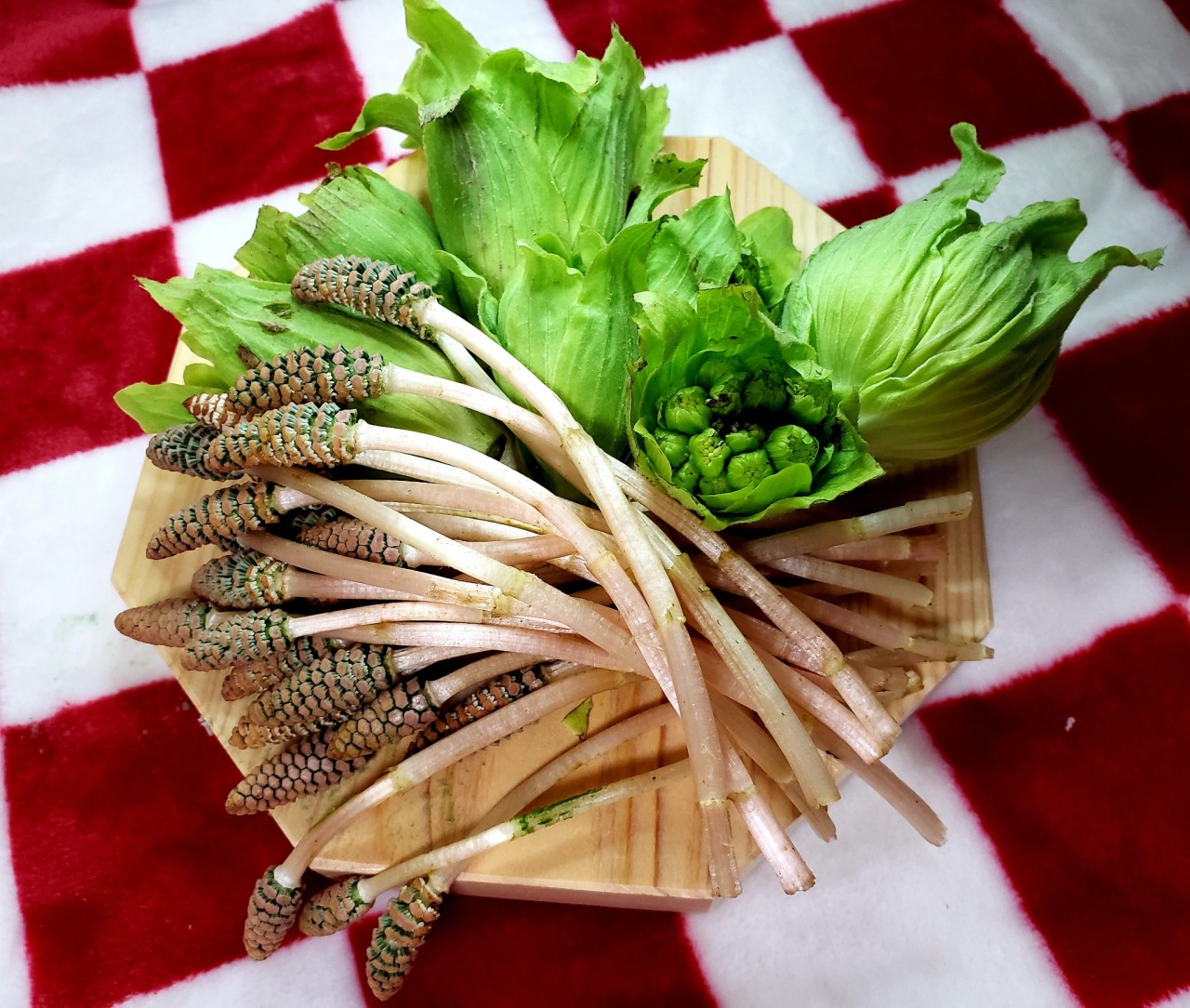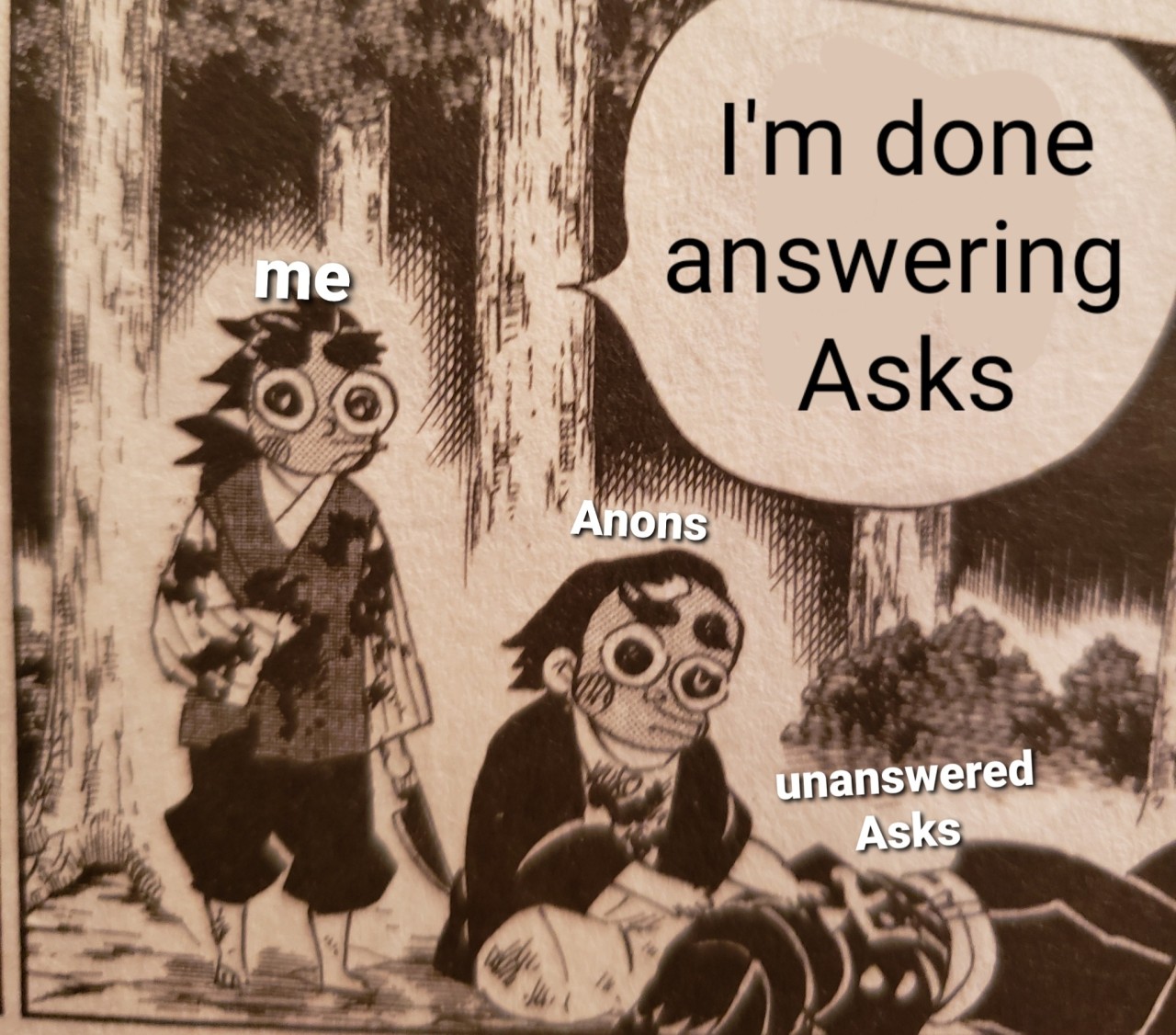Sanemi’s favorite: Ohagi
Sanemi oftens comes back from his breaks smelling like matcha, sweet beans, and glutinous rice, so he must love ohagi, right? We never did find out if he prefers smooth (koshi-an) or chunky (tsubu-an), better make all three. Maybe even throw in one covered in kinako (soybean powder) for variety.
Or buy all three, because no way was I going to bother making a batch of ohagi. It’s not to say I couldn’t, I certainly considered it, but to make a good batch you’d have to commit to a really big batch and I’m not going to hunt down people to eat fresh ugly ohagi. (Please imagine shy Giyuu not wanting to do this either, so he just dumps a huge batch all on Sanemi.) If any of you kitchen masochists really want to try your hands at it, this English recipe covers them pretty well, including explaining the autumn “hagi” flower name and the spring “botan” flower name, Botamochi. (Japanese bushclover and peonies look nothing alike, though…)
I instead just picked up a few from Imanishi-ken, one of the most famous ohagi shops in Kyoto, established in the Meiji period. This is the sort of place that will have a line waiting before they open and will be sold out long before noon.
Naturally, they pair with matcha, at least according to Sanemi’s taste. Therein lies the problem, though. A chasen (tea whisk) is typically held with the thumb and index finger, with the middle finger for support. Sanemi is missing these fingers on his right hand, so to add some personal effort to this episode of Kimetsu Kitchen, I tried it with only my thumb, ring finger, and pinky.
Whisking was tiring, and I found it dang near impossible to put enough strength in it to scrap the granules at the bottom up into the emulsion. I tried switching to my left hand and that went nowhere fast. Let’s hope that Sanemi, being of Pillar caliber and all, is more skilled and has a stronger pinky than I do.
So anyway. This is what good ohagi is supposed to look like (apart from chopstick indentations which were my fault when moving them, especially in the very soft smooth one). Basically, it’s boiled sweet red beans molded around a glutinous rice cake, which is typically on the chunky side, but there can be variations with rice around the anko (bean paste).
My only issue is that Imanishi-ken prides its traditional recipe on high quality beans and water, so they don’t add much sugar. Other Japanese recipes I’ve looked into before also tend to take pride is being not overly sweet.
No. Ohagi should be sweet, yo. Let Sanemi get his sweet fix, he needs it.

